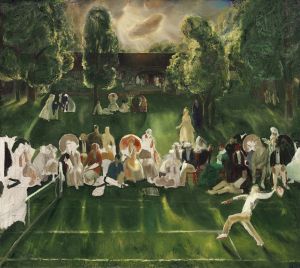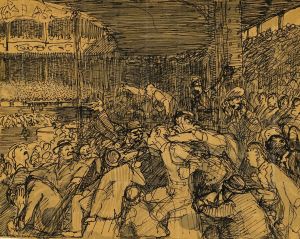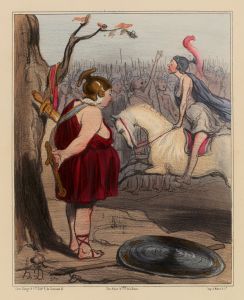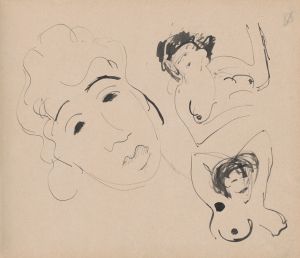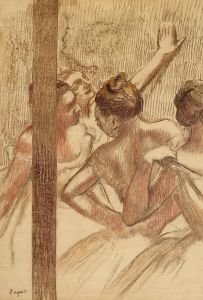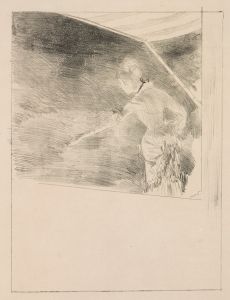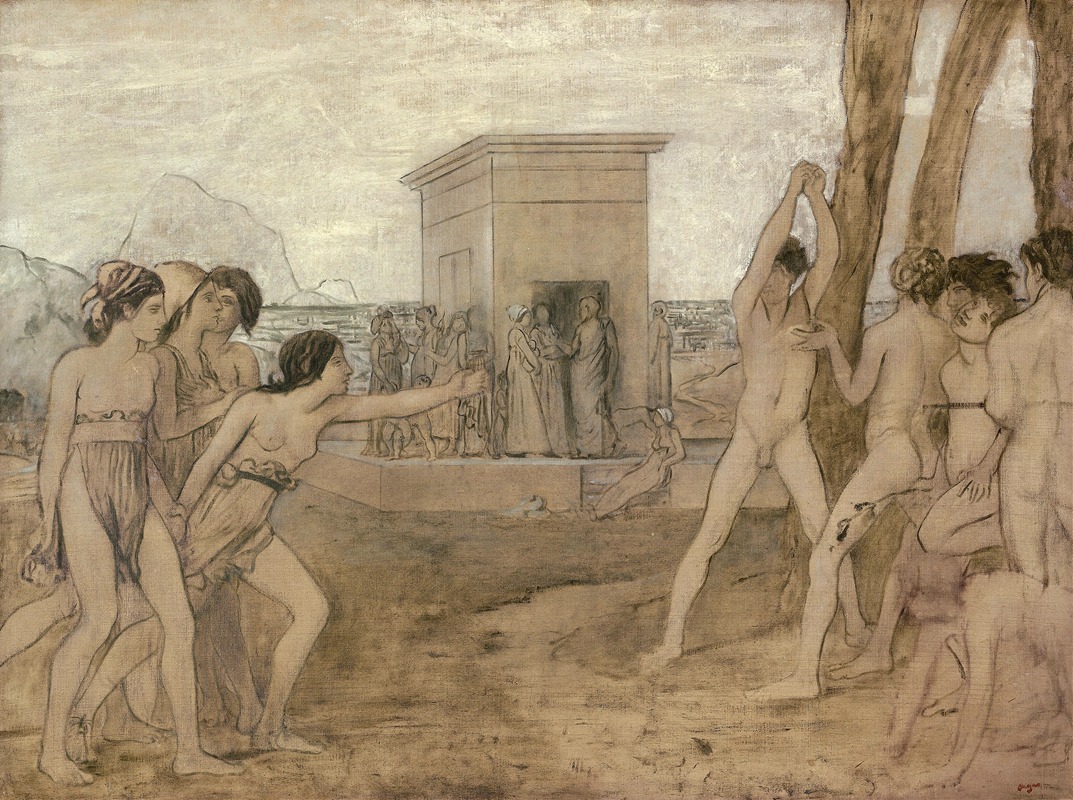
Young Spartan Girls Challenging Boys
A hand-painted replica of Edgar Degas’s masterpiece Young Spartan Girls Challenging Boys, meticulously crafted by professional artists to capture the true essence of the original. Each piece is created with museum-quality canvas and rare mineral pigments, carefully painted by experienced artists with delicate brushstrokes and rich, layered colors to perfectly recreate the texture of the original artwork. Unlike machine-printed reproductions, this hand-painted version brings the painting to life, infused with the artist’s emotions and skill in every stroke. Whether for personal collection or home decoration, it instantly elevates the artistic atmosphere of any space.
"Young Spartan Girls Challenging Boys" is a painting by the renowned French artist Edgar Degas, created between 1860 and 1862. Degas, primarily known for his works depicting ballet dancers, ventured into historical and classical themes early in his career, and this painting is a significant example of that phase.
The painting portrays a scene from ancient Sparta, a prominent city-state in Greece known for its military prowess and unique social structure. In this work, Degas captures a group of young Spartan girls and boys engaged in a playful yet competitive interaction. The scene is set in an open landscape, which is typical of the classical settings often depicted in art from this period.
Degas's composition is notable for its dynamic arrangement of figures and the way it captures movement and interaction. The young girls, depicted in the foreground, are shown challenging the boys, which reflects the Spartan society's emphasis on physical fitness and equality in training for both genders. This aspect of Spartan culture was relatively unique in ancient Greece, where most city-states did not afford women the same level of physical training or social freedom.
The painting is characterized by Degas's early style, which includes a focus on line and form, influenced by his academic training and admiration for classical art. The figures are rendered with a sense of solidity and weight, and the composition is carefully balanced to guide the viewer's eye across the scene. Degas's use of color is restrained, with a palette that emphasizes earth tones and the natural setting.
"Young Spartan Girls Challenging Boys" is housed in the National Gallery in London, where it is part of the museum's collection of 19th-century European paintings. The work is significant not only for its subject matter but also for its place in Degas's development as an artist. It demonstrates his early interest in themes of movement and human interaction, which would later become central to his depictions of dancers and modern life.
This painting provides insight into Degas's exploration of historical themes and his ability to convey complex social interactions through art. While Degas is often associated with Impressionism, this work reflects his academic roots and his interest in classical antiquity, showcasing his versatility and depth as an artist.
Overall, "Young Spartan Girls Challenging Boys" is a testament to Degas's skill in capturing the essence of human activity and his ability to draw inspiration from a wide range of historical and cultural sources. It remains an important piece within his oeuvre and continues to be appreciated for its artistic and historical significance.





